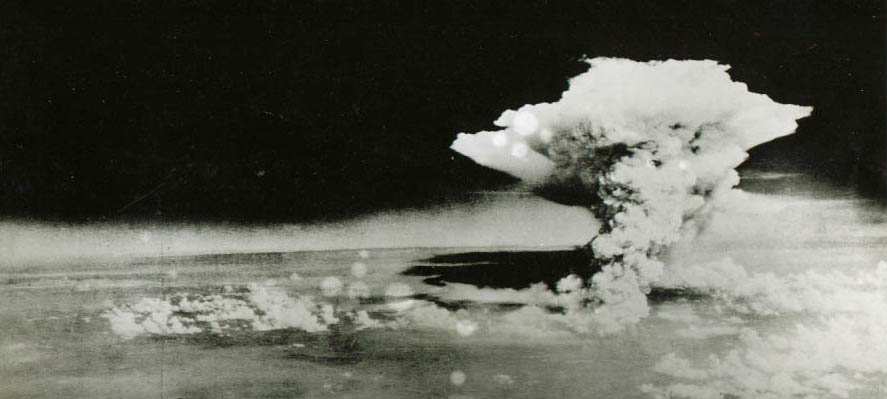It’s time for Canada to signal a shift in its nuclear disarmament policy
January 22nd marked a historic milestone for nuclear disarmament as the Treaty on the Prohibition of Nuclear Weapons (TPNW) came into force, officially becoming part of international law. Adopted by 122 states in 2017, the TPNW began a 90-day countdown to entry into force last October, when Honduras became the 50th state to ratify it.
While many Canadians are celebrating, however, the Canadian government is not. As a member of NATO, Canada continues to view nuclear deterrence as a legitimate security doctrine—and to oppose the TPNW. And even though Canada possesses no nuclear weapons and allows none on its territory, its participation in NATO’s Nuclear Planning Group effectively validates the weapons held by its nuclear-armed allies.
While every other category of weapons of mass destruction had been specifically prohibited, nuclear weapons—the most destructive of all—remarkably still had not.
The TPNW constitutes an urgently needed step on the path to the elimination of nuclear weapons, firmly rooted in the widespread rejection of the catastrophic humanitarian consequences of their use. An explicit prohibition under international law is an integral part of the normative framework necessary to achieve and maintain a world free of nuclear weapons.
While every other category of weapons of mass destruction had been specifically prohibited, nuclear weapons—the most destructive of all—remarkably still had not.
Publicly, NATO has sought to minimize the relevance of the TPNW. However, in an unclassified NATO document from October 2016, when momentum for TPNW negotiations was building, the treaty is viewed as anything but insignificant or ineffective. The document acknowledges that “the effects of a nuclear weapons ban treaty could be wide-ranging” and “could impact non-parties as well as parties,” affecting NATO’s standing as a military alliance.
As NATO noted then, the TPNW could limit nuclear weapons-related planning, training, and transit. It would forbid assisting or inducing allies to use, plan, or train to use nuclear weapons. It would ban the use of nuclear-capable delivery systems and nuclear weapons-sharing practices among NATO members. According to the document, “such treaty elements could—and are designed by ban advocates to—destroy the basis for U.S. nuclear extended deterrence.”
The current nuclear disarmament regime aims to limit proliferation but is remarkably complacent with the 13,000+ weapons already in existence. Many of these are vastly more powerful than the bombs that destroyed Hiroshima and Nagasaki, while others remain on high alert status, ready to be launched within minutes. The risk of deliberate use is compounded by the concomitant risks of accidental or unintended use.
In this environment, nuclear-armed states insist on retaining their nuclear arsenals for as long as the weapons exist. Yet this strategic, political, and logical straitjacket all but ensures that a world without nuclear weapons will never be achieved.
The International Campaign to Abolish Nuclear Weapons (ICAN) was a strong champion for the treaty and actively participated in negotiations. In 2017, ICAN was awarded the Nobel Peace Prize “for its work to draw attention to the catastrophic humanitarian consequences of any use of nuclear weapons and for its ground-breaking efforts to achieve a treaty-based prohibition on such weapons.”
Aside from imposing specific legal obligations, the political dimension of the TPNW is highly significant. While states with nuclear weapons will only disarm if and when they so choose, the pressure on them to do so will grow—domestically and internationally—and they will no longer control the narrative around the legitimacy of nuclear weapons.
The push for nuclear abolition is growing steadily in intensity, sophistication, effectiveness, and numbers. The international tide that will finally rid the world of the most destructive type of weapon of mass destruction is rising and threatens to submerge all opponents. Before it is too late, Canada must launch its boat on these waters and commit to the ban on nuclear weapons.
Canada must work with its allies, and engage would-be adversaries, to formulate security arrangements that do not pose an existential threat to human civilization. The Canadian government must make nuclear disarmament a top foreign policy priority and disengage from policies, doctrines, and actions that align Canada with states that possess and threaten to use nuclear weapons.
It is past time for Canada to set sail with the clear majority of the international community, who see in the TPNW a map to a land with no nuclear weapons.
Photo: A firestorm-cloud engulfs Hiroshima, some three hours after an atomic bomb was dropped on the Japanese city in August 1945.

